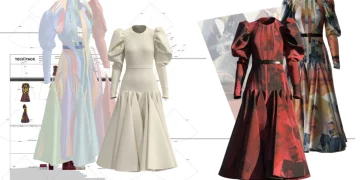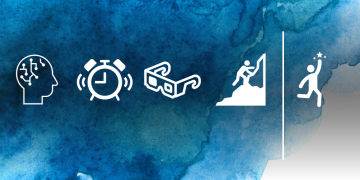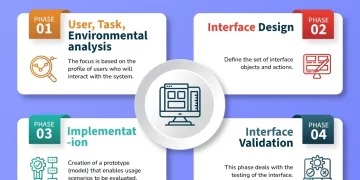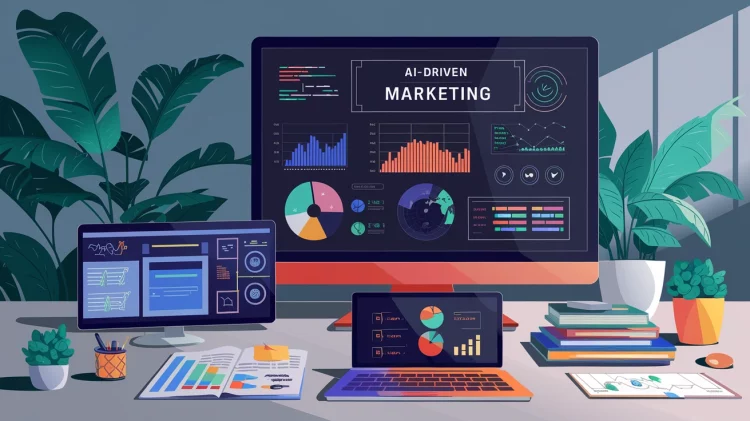Introduction
In today’s rapidly evolving digital landscape, brands must constantly assess their position and be ready for the next big trend. From artificial intelligence and sustainable practices to immersive digital experiences, trends emerge and fade with alarming speed. The challenge is not just recognizing the next big thing but understanding how it fits into your brand’s identity and how you can capitalize on it.
This article dives into the importance of trend forecasting, how to identify opportunities for growth, and the key steps to ensure your brand stays ahead of the curve. If you want to avoid being left behind and transform emerging trends into tangible opportunities, keep reading.
Understanding Trends: What They Mean for Your Brand
Trends are not just fleeting ideas or temporary shifts in consumer behavior—they are powerful signals of change. Whether it’s a shift toward more personalized experiences or an increasing demand for eco-friendly products, understanding trends allows your brand to anticipate the future and adapt accordingly.
In a world that is more interconnected than ever, consumer behavior is often shaped by global events, technological advancements, and shifting cultural narratives. To stay relevant, your brand must align itself with these evolving forces.
Why Trends Matter: The Competitive Edge
Ignoring trends can be detrimental. Brands that fail to evolve risk becoming obsolete or losing market share to more agile competitors. Conversely, those who successfully tap into trends position themselves as industry leaders, enjoying enhanced visibility, consumer trust, and growth opportunities.
Consider this: Netflix, the global entertainment powerhouse, successfully capitalized on the streaming trend at a time when cable TV was still dominant. By focusing on providing on-demand content, they transformed the entertainment landscape. Similarly, brands like Apple and Tesla didn’t just respond to trends—they created them, establishing a strong competitive advantage by being ahead of the curve.
Trends offer brands a chance to:
- Enhance Relevance: By staying aligned with consumer needs, trends allow you to create products, services, or experiences that resonate deeply with your audience.
- Foster Innovation: New trends often bring fresh ideas and technologies that can help brands innovate and differentiate themselves.
- Drive Consumer Engagement: As trends gain traction, they capture consumer attention. Brands that participate early can tap into this momentum and strengthen their connection with their target audience.
How to Identify the Next Big Trend
Spotting the next big trend before it becomes mainstream is an art and a science. It requires a combination of market research, creativity, and an understanding of societal shifts. Here are the key strategies for identifying future trends:

1. Leverage Data Analytics
In the age of big data, analytics plays a crucial role in trend forecasting. Consumer preferences, purchasing patterns, social media activity, and online reviews all provide valuable insights. Using tools like Google Trends, social listening platforms, and sentiment analysis, brands can gain real-time insights into emerging trends.
2. Monitor Industry Reports
Stay ahead by following key industry reports from market research firms, consultancy agencies, and thought leaders. These reports often provide a macro-level view of emerging trends across sectors, allowing you to identify potential opportunities that align with your brand’s values.
3. Tap into Consumer Behavior
Trends are driven by consumer needs and desires. By staying in tune with your customers through surveys, focus groups, and feedback loops, you can identify behavioral shifts and unmet needs. Consumers today want more personalization, sustainability, and convenience than ever before—how does your brand address these shifts?
4. Observe Cultural Shifts
Trends often stem from broader cultural movements. This could be anything from the rise of minimalist living to the demand for eco-friendly alternatives. Cultural shifts are often tied to significant global events or societal movements, such as the growing concern over climate change or the evolution of work-from-home cultures post-pandemic.
5. Engage with Innovators and Creators
Entrepreneurs, innovators, and creators are often the first to experiment with new ideas and concepts. Following influencers, thought leaders, and startups in your industry or adjacent markets can offer insights into upcoming trends. These are the people who can help you spot disruptive technologies or cultural shifts early on.
Key Trends Shaping the Future
Now that we’ve outlined how to identify trends, let’s take a look at some of the most impactful trends that are currently shaping the business landscape. These trends are not just fads—they represent the future of consumer expectations, technological evolution, and business innovation.
1. Artificial Intelligence and Automation
Artificial intelligence (AI) and automation are transforming industries across the globe. From chatbots and virtual assistants to machine learning algorithms that predict consumer behavior, AI is revolutionizing the way brands engage with customers. Automation, in particular, offers opportunities for efficiency and cost-saving, especially in marketing, supply chain management, and customer service.
In marketing, AI can deliver highly personalized experiences by analyzing data to understand preferences and behaviors. Brands that integrate AI into their strategy can create more intuitive, engaging experiences for their customers.
2. Sustainability and Eco-consciousness
Consumers are increasingly aware of the environmental impact of their purchases, and sustainability has become a key decision-making factor. In fact, studies show that a growing number of consumers are willing to pay more for eco-friendly products. From sustainable packaging to carbon-neutral supply chains, brands that prioritize sustainability will earn consumer trust and loyalty.
This trend also opens the door for innovation. Companies like Tesla, Patagonia, and Beyond Meat are at the forefront of this movement, demonstrating that sustainable practices can be integrated into business models without compromising on quality or profit margins.
3. The Experience Economy
Gone are the days when consumers were only interested in purchasing products—they now crave experiences. The experience economy refers to a shift where customers prioritize unique, memorable, and immersive experiences over material goods. This trend is evident in sectors like travel, hospitality, and retail, where experiential marketing has become a key strategy.
Brands that invest in creating immersive experiences—whether through augmented reality (AR), virtual reality (VR), or personalized events—are likely to stand out in a crowded market.
4. Personalization at Scale
As technology advances, brands have the ability to deliver hyper-personalized experiences at scale. From tailored recommendations on e-commerce platforms to personalized email marketing campaigns, consumers expect brands to understand their individual needs and provide solutions accordingly.

This trend is not limited to digital experiences. In physical retail environments, personalization could manifest through customized products, in-store experiences, or personalized customer service.
5. Health and Wellness
The global pandemic heightened awareness of health and wellness, leading to a surge in demand for products and services that promote well-being. From fitness apps and healthy food products to mental health initiatives and wellness retreats, brands in every industry are tapping into the growing interest in health-conscious living.
In fact, the wellness trend is reshaping entire industries, with wellness tourism, wearable fitness technology, and organic food products all becoming mainstream. Brands that position themselves as champions of well-being will connect with an increasingly health-conscious consumer base.
How to Prepare Your Brand for the Next Trend
Now that we’ve explored the trends that are shaping the future, the next question is: How do you prepare your brand to leverage them effectively?
1. Build Agility into Your Brand Strategy
The ability to pivot and adapt quickly is crucial for staying relevant. Brands that are too rigid in their approach risk missing out on new opportunities. Create flexible business models that allow you to experiment with new trends and respond to changes swiftly.
2. Innovate Continuously
Innovation should be at the core of your brand’s DNA. Whether it’s embracing new technology, revamping your product offerings, or reinventing your customer engagement strategies, never stop innovating. Encourage a culture of creativity within your team and invest in R&D to ensure your brand remains forward-thinking.
3. Prioritize Consumer-Centricity
At the end of the day, trends are shaped by consumer desires. Focus on understanding your customers’ evolving needs and interests, and align your products or services to meet these demands. Use data, feedback, and social listening to stay connected with your audience.
4. Stay Ahead of Technology
The integration of new technologies will define the success of many trends. Invest in tools and platforms that can help you stay on the cutting edge, whether it’s AI, blockchain, or virtual reality. Collaborate with tech innovators and keep an eye on emerging tools that could offer you a competitive edge.
5. Educate Your Team
Trends are not only about the end product—they require the support and understanding of your entire team. Educate your employees about emerging trends and empower them to think creatively. When everyone is aligned on your brand’s direction, you’ll be better positioned to capitalize on new opportunities.
Conclusion: Positioning Your Brand for Success
The future is fast-paced, and staying ahead of trends is crucial for long-term success. By being proactive and adopting a forward-thinking approach, your brand can not only survive but thrive in an ever-changing landscape. Embrace trends as opportunities for growth, and use them to fuel innovation, enhance customer engagement, and differentiate yourself from the competition.
By anticipating trends, innovating continuously, and staying in tune with your customers, your brand will be ready for the next big shift. So, what’s next for your brand? Are you ready to seize the opportunities that lie ahead?

















































